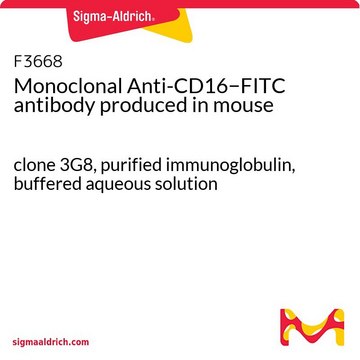1.15500
Acetonitrile
≥90% (HPLC), for preparative purposes, synthesis, cleaning, extraction and analytical purposes, EMPLURA®
Synonim(y):
ACN, Cyanomethane, Ethyl nitrile, Methyl cyanide
About This Item
for cleaning
for extraction
for preparative purposes
for synthesis
food and beverages
industrial qc
pharmaceutical
97 hPa ( 20 °C)
Polecane produkty
Nazwa produktu
Acetonitrile, EMPLURA®
klasa czystości
for analytical purposes
for cleaning
for extraction
for preparative purposes
for synthesis
Poziom jakości
100
200
gęstość pary
1.41 (vs air)
ciśnienie pary
72.8 mmHg ( 20 °C)
97 hPa ( 20 °C)
linia produktu
EMPLURA®
Próba
≥90% (HPLC)
Formularz
liquid
temp. samozapłonu
524 °C
973 °F
granice wybuchowości
16 %
producent / nazwa handlowa
Calbiochem®
zanieczyszczenia
≤0.00016 meq/g Acidity
≤0.5% Water
pozostałość po odparowaniu
≤0.005%
współczynnik refrakcji
n20/D 1.344 (lit.)
bp
81-82 °C (lit.)
mp
−45 °C (lit.)
temp. przejścia
flash point 2 °C
gęstość
0.786 g/mL at 25 °C (lit.)
Zastosowanie
environmental
food and beverages
industrial qc
pharmaceutical
Format
neat
Warunki transportu
ambient
temp. przechowywania
−20°C
ciąg SMILES
CC#N
InChI
1S/C2H3N/c1-2-3/h1H3
Klucz InChI
WEVYAHXRMPXWCK-UHFFFAOYSA-N
Szukasz podobnych produktów? Odwiedź Przewodnik dotyczący porównywania produktów
Opis ogólny
Zastosowanie
- Electroanalysis and Spectroelectrochemistry: Acetonitrile is widely used in electroanalysis and spectroelectrochemistry due to its excellent solvent properties and compatibility with a variety of electrodes. Recent research has demonstrated its use in the electroanalysis of nonaromatic explosives in the presence of dissolved oxygen. This application enhances the sensitivity and accuracy of detecting explosive compounds, which is critical for environmental monitoring and safety assessments (Holubowitch et al., Analytical Chemistry, 2020).
- Chromatographic Separation of Anthocyanins: Acetonitrile is a preferred solvent in high-performance liquid chromatography (HPLC) for the separation of anthocyanins and other phenolic compounds. Studies have explored the selectivity control of anthocyanin separation by replacing acetonitrile with methanol in the mobile phase, highlighting the solvent′s role in optimizing chromatographic conditions for improved resolution and detection sensitivity (Deineka et al., Journal of Analytical Chemistry, 2021).
- Peroxyoxalate Chemiluminescence Detection: Acetonitrile is used in peroxyoxalate chemiluminescence for the detection of α-amino acids. The solvent′s ability to form stable mixed solutions with water and ethyl acetate enhances the chemiluminescence reaction, allowing for sensitive and selective detection of amino acids in various samples. This application is essential for biochemical and clinical analyses (Kan et al., American Journal of Analytical Chemistry, 2020).
- Electrochemical Detection of DNA Modifications: Acetonitrile is utilized in electrochemical methods for detecting DNA modifications, such as 5-formyluracil. The solvent′s role in stabilizing the (2-benzimidazolyl) acetonitrile labeling reaction enhances the selectivity and sensitivity of detecting DNA modifications, which is crucial for genomic and biomedical research (Tang et al., Analytical Chemistry, 2021).
- Alternative Solvent in Chromatography: Research has investigated replacing acetonitrile with ethanol in reversed-phase HPLC for determining anthocyanins. This substitution aims to maintain chromatographic performance while reducing the environmental impact and costs associated with acetonitrile use. The findings demonstrate the feasibility of using ethanol as a greener alternative without compromising analytical quality (Deineka et al., Journal of Analytical Chemistry, 2023).
Ostrzeżenie
Komentarz do analizy
Identity (IR): conforms
Acidity: ≤ 0.00016 meq/g
Density (d 20 °C/ 4 °C): 0.782 - 0.783
Evaporation residue: ≤ 0.005 %
Water: ≤ 0.5 %
Informacje prawne
Nie możesz znaleźć właściwego produktu?
Wypróbuj nasz Narzędzie selektora produktów.
Hasło ostrzegawcze
Danger
Zwroty wskazujące rodzaj zagrożenia
Zwroty wskazujące środki ostrożności
Klasyfikacja zagrożeń
Acute Tox. 4 Dermal - Acute Tox. 4 Inhalation - Acute Tox. 4 Oral - Eye Irrit. 2 - Flam. Liq. 2
Kod klasy składowania
3 - Flammable liquids
Klasa zagrożenia wodnego (WGK)
WGK 2
Temperatura zapłonu (°C)
2.0 °C - closed cup
Certyfikaty analizy (CoA)
Poszukaj Certyfikaty analizy (CoA), wpisując numer partii/serii produktów. Numery serii i partii można znaleźć na etykiecie produktu po słowach „seria” lub „partia”.
Masz już ten produkt?
Dokumenty związane z niedawno zakupionymi produktami zostały zamieszczone w Bibliotece dokumentów.
Klienci oglądali również te produkty
Nasz zespół naukowców ma doświadczenie we wszystkich obszarach badań, w tym w naukach przyrodniczych, materiałoznawstwie, syntezie chemicznej, chromatografii, analityce i wielu innych dziedzinach.
Skontaktuj się z zespołem ds. pomocy technicznej



